The Economics and Statistics Division maintains archives of previous publications for accountability purposes, but makes no updates to keep these documents current with the latest data revisions from Statistics Canada. As a result, information in older documents may not be accurate. Please exercise caution when referring to older documents. For the latest information and historical data, please contact the individual listed to the right.
<--- Return to Archive
For additional information relating to this article, please contact:
January 20, 2021ANALYSIS OF NOVA SCOTIA'S CONSUMER PRICE INDEX FOR ANNUAL 2020 CPI inflation in Nova Scotia increased 0.3% in 2020 following strong gains over the last two years (2.2% in 2018 and 1.6% in 2019).
Nova Scotia’s annual inflation in 2020 was lower compared to the national rate of 0.7%, which slowed compared to the 1.9% increase in 2019. Nationally, this was the slowest pace since 2009 as strict social distancing measures introduced to limit the spread of COVID-19 had caused a significant decline in consumer spending.
The slowdown in the price growth in consumer goods and services reflected Canadians changing spending patterns as most people adopted to staying home, travelling less and buying more of certain items and fewer of others.
The main contributor to the slower CPI growth in 2020 was the decline in prices for non-durable goods because of lower gasoline prices.
Food prices increased 2.3% posting the highest increase among major components of the CPI. Meat prices increased 4.5% in 2020 as temporary closures and reduced operating capacities at several large beef processing plants contributed to notable growth in beef prices in early to mid-2020.
Impacts of COVID-19 on Consumer Price Index
The COVID-19 pandemic has had an impact on the Consumer Price Index (CPI), both in terms of the shifts in consumer spending patterns and in terms of the special imputation treatments introduced to address missing or unavailable products and prices in 2020. Goods and services in the CPI that were not available to consumers throughout most of 2020 because of COVID-19 restrictions received special treatments, effectively removing their impact on the calculation of the monthly and annual average CPI. Statistics Canada’s Technical Supplement documents which have been released with the CPI data on a monthly basis are available in the Prices Analytical Series detailing the imputations used to compile the monthly CPI in 2020.
Average annual prices rose at a slower pace in every province in 2020 compared with a year earlier. Prices rose slowest in Atlantic Canada reflecting the lower price of furnace fuel oil.
Alberta (+1.1%) posted the largest inflation growth among all provinces in 2020 while prices remained unchanged in Prince Edward Island.
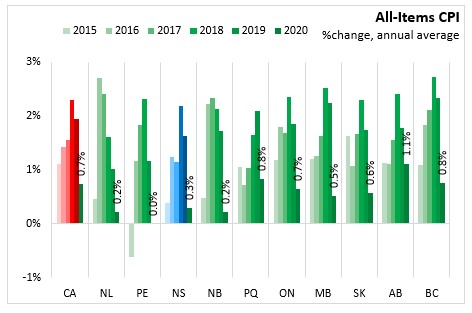
The CPI excluding food and energy increased 1.3% in Nova Scotia, higher than the national average of 1.1% in 2020. Nova Scotia along with Prince Edward Island and Quebec had the largest increase for the CPI excluding food and energy while the smallest increase was in Newfoundland and Labrador (+0.8%).
Average annual price increase excluding food and energy was slower in every province in 2020 compared to last year.
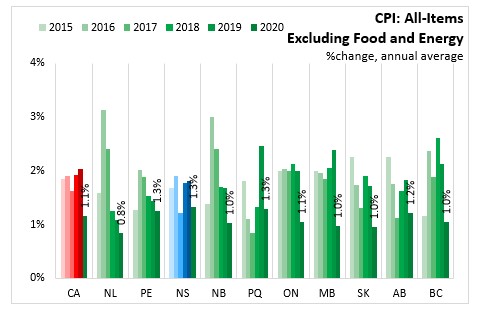
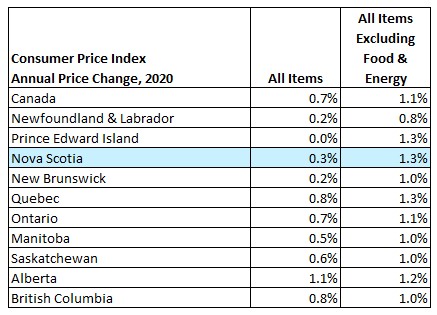
Major Components for 2020
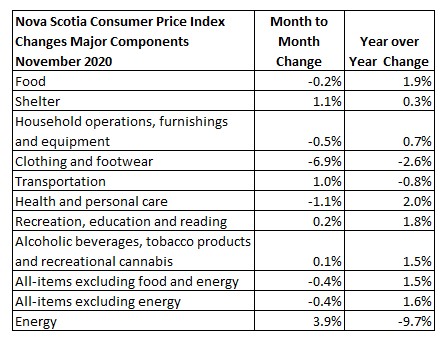
For Nova Scotia, prices increased in four of the eight major components of the consumer price index in 2020 with the largest increase seen in food prices (+2.7%). The increase in Nova Scotia’s food prices was similar to the growth seen in 2019 (+2.8%). The price growth for health and personal care increased to 2.0% in 2020 in Nova Scotia, up from 0.2% in 2019. Prices of alcoholic beverages and tobacco products increased faster in 2020 (+2.1%) than in 2019 (+1.7%) in Nova Scotia.
Clothing and footwear prices declined 1.3% annually in Nova Scotia in 2020 following a 0.6% gain recorded in 2019. Nationally, clothing and footwear prices were down 1.8% in 2020, posting the largest annual average decline since 2010. Lower prices in 2020 also reflected the large discounts that many retailers offered to online prices as in-person shopping was suspended in most provinces throughout April and May 2020. Alberta (+0.8%) was the only province registering an increase in clothing and footwear prices in 2020.
Recreation, education and reading prices in Nova Scotia declined 1.0% in 2020 following a 1.4% gain seen in 2019.
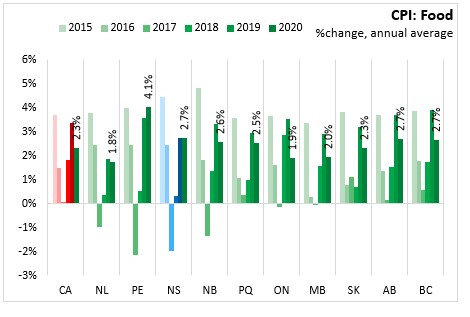
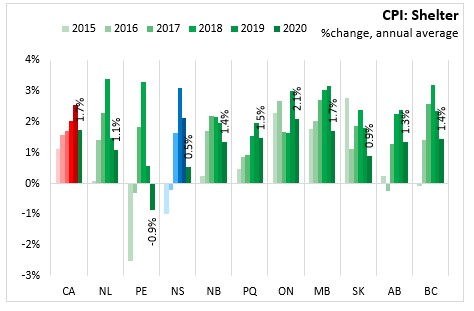
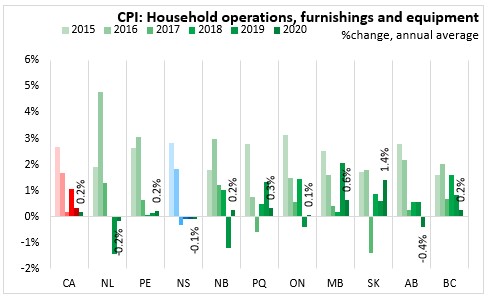

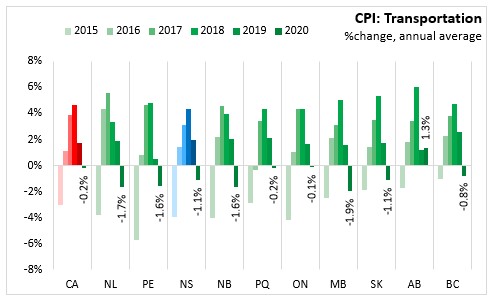
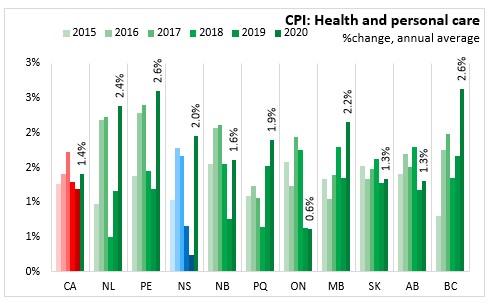
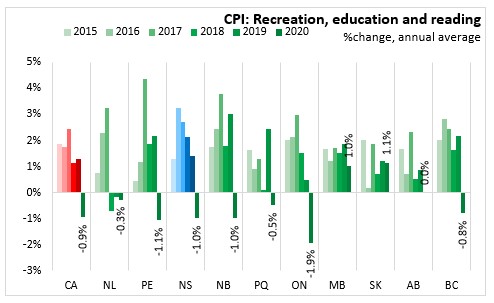
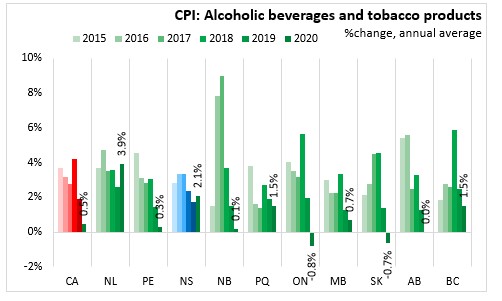
Energy prices declined in every province in 2020 with Prince Edward Island posting the largest decline (-14.2%). Nationally, energy prices were down 7.6% in 2020 with Alberta (-3.7%) posting the lowest decline.
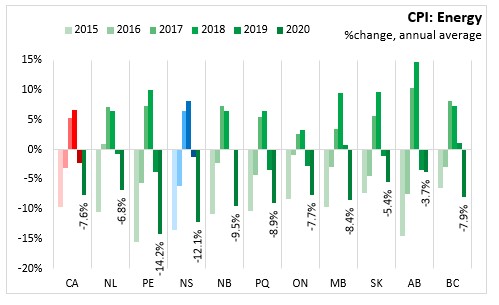
Source: Statistics Canada. Table 18-10-0005-01 Consumer Price Index, annual average, not seasonally adjusted
<--- Return to Archive